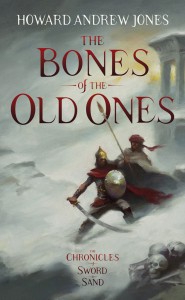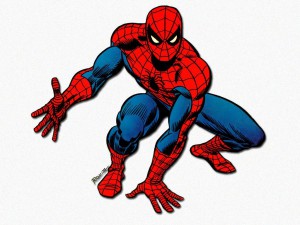Character Design, Part 2
 My friend Mick wrote in the other day on the site and told me he’d “love to hear more theory about how you pick weaknesses and flaws and how you use them.”
My friend Mick wrote in the other day on the site and told me he’d “love to hear more theory about how you pick weaknesses and flaws and how you use them.”
I’d originally planned to show a filled-in character sheet for Lisette, as discussed in the post of part 1, but Mick’s question intrigued me more and more when I realized I didn’t have a ready answer. So I’ll hold off on that character sheet for a few more days.
 Before I do, I wanted to make clear that I’m sharing all these writing observations in a hope that they’ll be of use to other writers. I’m experienced, sure, but I don’t mean to present myself as an unassailable expert. I’m still learning a lot about the process (I realized something important about POV characters just this week that I’ll be blogging about soon). I don’t know that I’ll ever say that THIS is the only way to write fiction, or that THIS method is the only answer. I just know what I’ve learned the hard way seems to work for me.
Before I do, I wanted to make clear that I’m sharing all these writing observations in a hope that they’ll be of use to other writers. I’m experienced, sure, but I don’t mean to present myself as an unassailable expert. I’m still learning a lot about the process (I realized something important about POV characters just this week that I’ll be blogging about soon). I don’t know that I’ll ever say that THIS is the only way to write fiction, or that THIS method is the only answer. I just know what I’ve learned the hard way seems to work for me.
As to strengths and weaknesses, I believe they’re intimately connected. If you know what your character is good at, you may have an inkling about what they’re likely not as good at doing. If your character never hesitates doing the honorable thing, perhaps he or she is blind to the idea that other people don’t think like that. (It’s actually a common foible to assume that other people ARE like you, and it makes sense that realistic characters would think the same way.) Sometimes what makes you strong also makes you weak. Take Captain Kirk — he has a fantastic ship and crew, but if they’re in danger, he’s obsessed with worry about them. He’ll drive himself through sleepless nights trying to find a way to get them safely home.
What tethers a protagonist to reality so that they’re not an unstoppable juggernaut of awesome? Spider-Man is worried about his school work and money and his Aunt May. Fafhrd and the Gray Mouser may be great warriors and thieves, but they’ve got no head for money. Conan, well, he’s pretty unstoppable, but he’s not well-versed in sorcery, and there’s more than once over the course of the short stories where that stops him in his tracks.
 But when Mick writes of weaknesses, he’s probably not meaning krytponite level weaknesses so much as the kind of weaknesses that round out real human beings. Like the fact I tend to be kind of cranky as the evening wears on, or that my wife’s brilliance can intimidate other people without her even sounding remotely socially awkward like Sheldon or Amy from The Big Bang Theory. Which brings us back around to my first point, which is that the interesting weaknesses are connected to strengths. Wolverine’s a great lone wolf, but that means he has trouble connecting with others. Locke Lamora is independent and creative and protective of those he values, which means he sometimes puts himself in outrageously dangerous situations by trying to handle something on his own instead of getting help.
But when Mick writes of weaknesses, he’s probably not meaning krytponite level weaknesses so much as the kind of weaknesses that round out real human beings. Like the fact I tend to be kind of cranky as the evening wears on, or that my wife’s brilliance can intimidate other people without her even sounding remotely socially awkward like Sheldon or Amy from The Big Bang Theory. Which brings us back around to my first point, which is that the interesting weaknesses are connected to strengths. Wolverine’s a great lone wolf, but that means he has trouble connecting with others. Locke Lamora is independent and creative and protective of those he values, which means he sometimes puts himself in outrageously dangerous situations by trying to handle something on his own instead of getting help.
Applied to my own writing, Asim el Abbas is unfailingly honest. He tends to take things at their face value, although he does grow wiser. He’s not actually stupid, he’s just pretty straight forward and not one who usually thinks outside the box. Anyone who’s read the books knows how much that has hurt him, but also how much his perspective has assisted him as well.
And speaking of my own writing, I’d better go feed the horses and get to it. Oh — I almost forgot to mention. You can win a free copy of my new book, Stalking the Beast, by entering a contest over at Black Gate. Swing by and take a look!
0 Comments